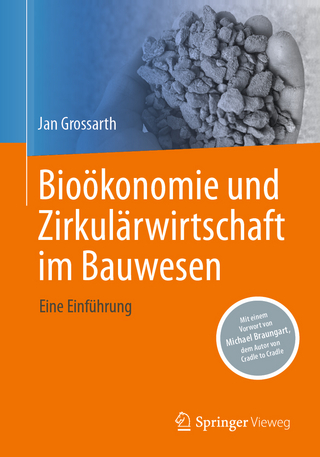
Energy Resources, Utilization & Technologies
CRC Press (Verlag)
978-1-032-91855-6 (ISBN)
- Noch nicht erschienen (ca. Oktober 2024)
- Versandkostenfrei
- Auch auf Rechnung
- Artikel merken
Explanatory text that treats the complete fundamentals of energy and current energy resources, technologies developments, solutions to energy issues and new concepts ranging from fossil fuel to solar energy, biomass energy, wind energy, ocean energy, geothermal energy, hydrogen energy, fuel cells, thermo-electric systems, nuclear energy and nanotechnology concepts to generate clean energy. The theoretical aspects of various energy conversion technologies, and design practices in light of national and international perspectives are discussed with educational examples. Every technique is explained in detail and every chapter is concluded with a reference section, recommended reading and a number of questions. Intended for university students with various backgrounds, who are involved in energy science and engineering (chemistry, physics, environmental sciences, earth sciences, petroleum, mining and mechanical engineering). Recommended for professionals seeking an introduction to the subject.
Dr. Anjaneyulu Yerramilli, Ph.D is presently working as visiting Professor in Chemistry/Environment at Jackson State University, Jackson, MS. During his career in India he amassed 35 years of research and teaching experience in Environmental/Energy technologies, 34 Ph.D students received Ph.D degrees under his supervision, he published more than 100 research papers in peer reviewed journals and presented at various international conferences. He has authored a number of books on Environmental Impact Assessment Methodologies (2011, BS Publications / CRC Press / Balkema), Introduction to Environmental Science (2005, BS Publications), and Hazardous Waste Management, Air Pollution and Control Technologies (2002, Allied Publishers). He has expertise in EIA, Energy Technologies, Risk Assessment and Air Pollution modeling. He is presently working as PI for two programs: i) a Department of Defense-sponsored program on High Performance Computation for Development of Novel Materials and ii) Atmospheric Dispersion Modeling of Gulf Coast, sponsored by NOAA, and as co-PI for a NSF-sponsored program on Collaborative Research CI-TEAM Demonstration Project entitled Water HUB for Cyber Enabled Training, Education, and Research in Water Resources. He has also published a number of papers on simulation of mesoscale coastal circulation of Gulf Coast for air pollution dispersion by integrating WRF, HYSPLIT, SMOKE and CMAQ models (http://chem.jsums.edu/anjaneyulu). Dr. Francis Tuluri holds a Ph.D in Physics, and has served as Associate Professor in the Department of Technology at Jackson State University since 2001. Prior to his service in USA, he was for more than two decades a faculty member at a reputed Engineering College in India where he taught several courses in Engineering Physics, Energy, Semiconductor Physics and Devices, Electronics and Computer technology and developed teaching methods utilizing technological teaching tools for pedagogy. His areas of research include Magnetic Resonance and Imaging, Liquid Crystals Display materials and devices, polymer electrolyte fuel cell membranes in fuel cells, environmental impacts of air pollution on air quality and health, and air quality modeling studies. He has published over 40 research papers in peer reviewed journals of high national and international standing. He holds certifications from NOAA and EPA in computer modeling simulations using HYSPLIT, WRF, CMAQ and SMOKE.
1. Introduction - Energy Fundamental Concepts, Sources and Utilization 2. Solar Energy 3. Biomass Energy 4. Wind Energy 5. Ocean Energy 6. Geothermal Energy 7. Hydrogen Energy 8. Fuel Cells 9. Thermoelectric Systems 10. Nuclear Energy 11. Application of Nanotechnologies for Clean Energy
| Erscheint lt. Verlag | 14.10.2024 |
|---|---|
| Verlagsort | London |
| Sprache | englisch |
| Maße | 178 x 254 mm |
| Themenwelt | Naturwissenschaften ► Biologie ► Ökologie / Naturschutz |
| Technik ► Elektrotechnik / Energietechnik | |
| ISBN-10 | 1-032-91855-1 / 1032918551 |
| ISBN-13 | 978-1-032-91855-6 / 9781032918556 |
| Zustand | Neuware |
| Haben Sie eine Frage zum Produkt? |
aus dem Bereich


